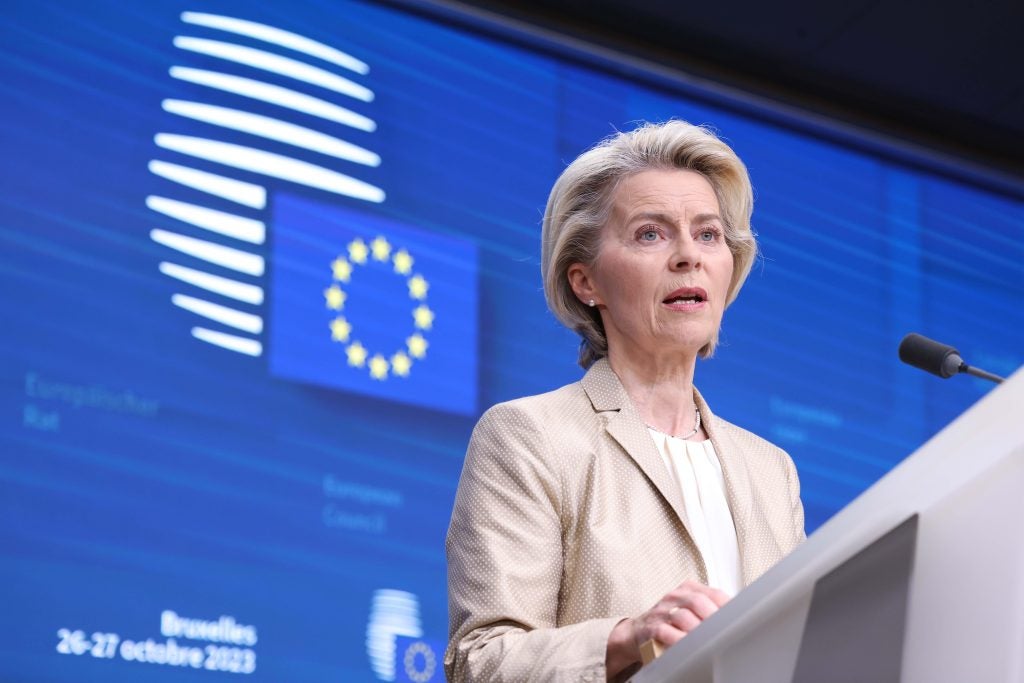The EU has found itself overwhelmed by two simultaneous crises, and climate action is inevitably slipping off the radar. The degree to which the Ukraine conflict is already taking so much focus is reflected in this year’s State of the Energy Union report released last week, which opens by describing how the EU responded collectively to Russia’s invasion of Ukraine and its weaponisation of energy. It is the obvious and important context, and it highlights how, when spurred into action, the EU can accomplish a lot. The EU reduced its gas demand by more than 18% compared with the previous five years, saving around 53 billion cubic metres of gas, the report notes.
However, much of that imported Russian gas was replaced by other fossil fuels, and the report goes on to acknowledge that even with the sudden reduction of gas demand, the EU is not on track to meet its goal of climate neutrality in 2050. Much of this year’s report is focused on energy security, noting that the EU’s gas storage facilities are 98% full ahead of this winter. It analyses the early effects of the REPowerEU Plan and other emergency legislative measures. Compared with the previous reports from 2015 to 2022, climate action competes with energy security for the EU assessment’s attention.
What is also new about this year’s report is that it for the first time assesses the path all the way towards climate neutrality in 2050 – an assessment that is mandated every five years under the EU Climate Law. Matthias Duwe, coordinator of the European Climate Neutrality Observatory (ECNO), welcomes the European Commission’s refreshing honesty in its report – but also notes that it means there is a lot of work to do.
“We welcome the Commission’s acknowledgement that the overall pace of change is still too slow and needs to be significantly picked up, with some sectors even heading in the wrong direction,” he said in a statement. “This is in line with our own assessment of progress towards climate neutrality and underscores the importance of adopting and fully implementing the Fit-for-55 legislative package.”
The observatory has issued its own report on the EU’s progress on climate action towards net zero in 2050, finding that while the EU is moving in the right direction (with the exception of climate finance and carbon capture and storage, which are moving in the wrong direction) the pace is too slow and the bloc is off track. Its assessment looks at 13 “building blocks” essential to reaching climate neutrality and presents objectives for each of these blocks, identifying key enablers to realise them.
However, the report says too that there is still not enough data to do a full analysis and the state of the energy union reports are insufficient. “It is no longer enough to look only at past trends for greenhouse gas emissions,” said Duwe. “What we need to know now is whether the enablers of the necessary deeper shifts in the economy are being put in place at the right time and the right pace.”
The observatory’s analysis finds that finance is the most worrying area, because the Commission’s RePowerEU plan to eliminate dependence on Russian gas incentivises new fossil fuel infrastructure. “Counter-productive economic incentives remain in place, with some of them worsening in 2021 and 2022,” the report concludes. “The EU economy consistently puts too little public and private capital into climate investments, while still over-investing in fossil fuels. This endangers the transition at large as today’s climate investments enable tomorrow’s emissions reduction.”
The Commission unveiled its €300bn ($317.96bn) plan for kicking the EU’s addiction to Russian fossil fuels in May 2022, and Commission President Ursula von der Leyen was keen to stress that 95% of that will be dedicated to clean energy. However, looking at the actual upfront investments, a picture emerges of an EU package much more weighted towards securing new short-term fossil fuel supplies, than climate action. Immediately, €2bn is available to build up oil infrastructure, particularly to expand ports and connect them to areas where oil is needed. Another €10bn is available to build liquified natural gas (LNG) terminals and other new gas infrastructure. By contrast, the spending on renewables and efficiency takes comparatively longer to be given out and its deployment is less certain.
The von der Leyen commission has been the most climate-ambitious in EU history, with her flagship Green Deal guiding some major transformations in climate law over the past three years. Now, as her commission enters the last year of its term, von der Leyen will have an eye on legacy. The tenuous security situation will make it tempting to put climate action on the back burner, especially as she faces pressure fom her own centre-right political family to water down EU climate laws. However, as the Commission’s own State of the Energy Union report notes, “there is no room for complacency”.









